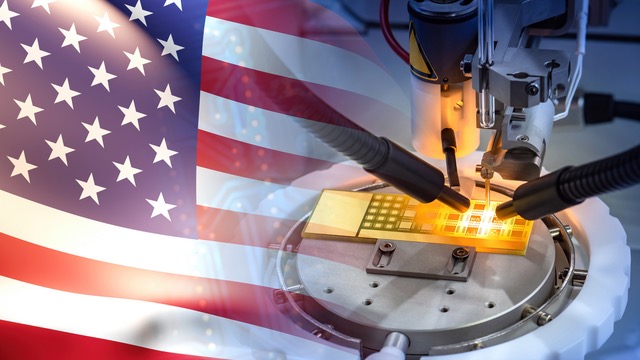US not even close to manufacturing revival, can 2024 change that?

According to the Institute for Supply Management (ISM), U.S. manufacturing continued to shrink in December. Although the manufacturing PMI increased to 47.4 last month, breaking the two-month streak of remaining unchanged at 46.7, it marked the 14th consecutive month where the PMI remained below 50, indicating a contraction in the manufacturing sector.
The country focuses on differentiation rather than cost competitiveness, with leading subsectors being computer/electronic products, chemical products, and food, beverage, and tobacco products. As the demand for sustainability grows, the sector is under pressure to adopt a more eco-friendly approach while remaining cost-competitive.
Despite contributing $2.3 trillion to the US GDP and employing around 12 million people, the manufacturing industry is facing several challenges, including a decline in labor productivity and a decade-long fall in productivity growth since 2011. The industrial productivity growth lags behind in terms of the adoption of robots per worker. These issues highlight the need for investment in technology and innovation to boost productivity. The manufacturing industry needs support, and some hope that subsidies for chip production and green technology, along with investment clustering, could lead to a manufacturing renaissance.
Fightback to slump
“Manufacturing’s purchasing and supply executives expect to see overall growth in 2024. They are optimistic about overall business prospects for the first half of 2024 and more excited about faster growth in the second half.” – Timothy Fiore, chair of the ISM Manufacturing Business Survey Committee.
President Joe Biden’s economic agenda centers around the resurgence of US manufacturing. Manufacturing.gov states that the U.S. Department of Energy (DOE) has allotted $22 million to 12 state-run programs to accelerate smart manufacturing at small- and medium-sized facilities. The aim is to make smart manufacturing technologies and high-performance computing more accessible across the domestic manufacturing sector, accounting for over one-sixth of U.S. carbon emissions and nearly a quarter of the nation’s energy usage.
How can PR help in the revival of the manufacturing industry?
In the face of ongoing contraction, it’s necessary to reinvent and re-evaluate the methods that have dominated the industry for years. PR efforts should focus on emphasizing the need for eco-friendly practices and showcasing success stories of companies adopting sustainable approaches since companies worldwide are adopting new methods to make manufacturing more sustainable, digital, skilled, and resilient. PR can help revive the industry by highlighting its importance, advocating for supportive policies, the sector’s contribution to the GDP, and employment can build public support. By engaging stakeholders and building awareness of industry challenges and solutions, PR can contribute to economic growth and sustainability.
PR has the power to create a narrative that instills confidence, attracting investments to change the game for both manufacturers and the entire industry. Strategic investment in technology and innovation, coupled with impactful PR efforts, holds the key to enhancing productivity and fostering a revival in the US manufacturing industry.
Find out more about BCM’s manufacturing PR experience here.